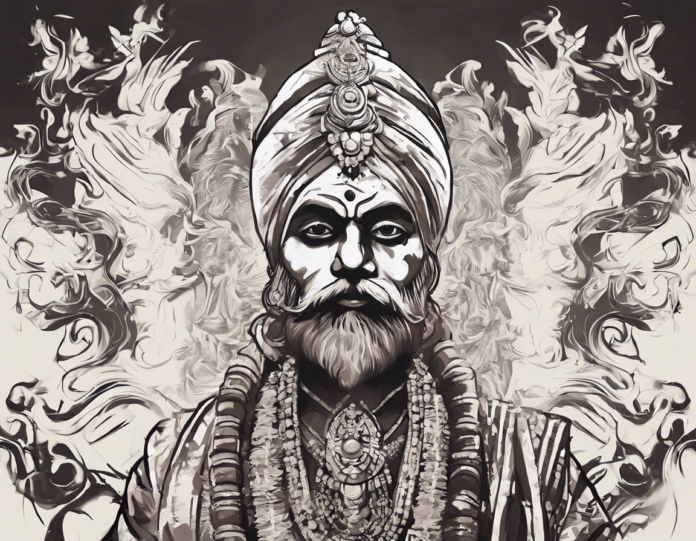If there is one thing that has been a consistent thread in India’s cultural tapestry throughout the ages, it is the reverence for nature and its elements, especially trees. Trees have held a sacred place in Indian culture for centuries, with many species revered for their spiritual significance. One such movement that has gained momentum in recent times is the Amrit Vriksh Andolan, a campaign aimed at saving India’s sacred trees.
The Significance of Trees in Indian Culture
Trees have always been integral to Indian culture, with many species being considered sacred. The Peepal tree, for example, is believed to be the abode of Lord Vishnu, while the Banyan tree is associated with the Trimurti – Brahma, Vishnu, and Shiva. Trees like the Neem, Tulsi, and Ashoka have medicinal properties and are revered for their healing properties.
In Indian mythology, trees are often depicted as witnesses to history, with tales of sages meditating under ancient trees and seeking enlightenment. The concept of Vanaspati, or the Lord of the Forest, underscores the spiritual significance of trees in Indian culture.
The Threat to India’s Sacred Trees
Despite their cultural and ecological significance, India’s sacred trees are facing numerous threats. Urbanization, deforestation, development projects, and climate change are putting immense pressure on these ancient beings. Many sacred groves and forests have been cleared to make way for infrastructure projects, leading to the destruction of habitats and loss of biodiversity.
The rampant commercial exploitation of trees for timber, paper, and other products has also taken a toll on India’s forests. Additionally, pollution and poor land management practices have further exacerbated the plight of these sacred trees.
The Rise of the Amrit Vriksh Andolan
In response to the growing threats facing India’s sacred trees, the Amrit Vriksh Andolan was born. The movement, which translates to “Nectar Tree Movement” in English, aims to raise awareness about the importance of trees in Indian culture and to mobilize communities to protect and preserve them.
The Amrit Vriksh Andolan focuses on identifying and safeguarding sacred trees across India. Volunteers and activists work to create tree registries that document the location, species, and cultural significance of each tree. By raising awareness about the ecological and spiritual importance of these trees, the movement seeks to garner support for their conservation.
Key Initiatives of the Amrit Vriksh Andolan
-
Sacred Tree Conservation: The Amrit Vriksh Andolan identifies sacred trees in danger of being cut down and works to protect them through legal channels and community engagement.
-
Community Awareness: Through workshops, seminars, and social media campaigns, the movement educates communities about the importance of sacred trees and the role they play in preserving India’s cultural heritage.
-
Tree Planting Drives: In addition to protecting existing sacred trees, the Amrit Vriksh Andolan organizes tree planting drives to replenish the lost green cover and encourage sustainable practices.
-
Advocacy and Policy: The movement lobbies for stronger environmental regulations and the inclusion of sacred trees in conservation policies at the local, state, and national levels.
The Impact of the Amrit Vriksh Andolan
Since its inception, the Amrit Vriksh Andolan has made significant strides in protecting and preserving India’s sacred trees. By raising awareness about the cultural and ecological value of these trees, the movement has mobilized communities and policymakers to take action. Many sacred trees that were once threatened are now under official protection, thanks to the efforts of the Andolan.
FAQs
-
Why are trees considered sacred in Indian culture?
In Indian culture, trees are revered for their spiritual significance and ecological importance. Many trees are associated with deities and have medicinal properties, making them integral to rituals and Ayurvedic practices. -
What are some common sacred trees in India?
Some common sacred trees in India include the Peepal, Banyan, Neem, Tulsi, and Ashoka. These trees hold special cultural and religious significance and are often found in temples and sacred groves. -
What are the main threats to India’s sacred trees?
The main threats to India’s sacred trees include urbanization, deforestation, development projects, climate change, commercial exploitation, and pollution. These factors are leading to the decline of sacred tree populations across the country. -
How can individuals contribute to the conservation of sacred trees?
Individuals can contribute to the conservation of sacred trees by planting native species, participating in tree planting drives, supporting conservation efforts, and raising awareness about the importance of trees in Indian culture. -
What is the role of the government in protecting India’s sacred trees?
The government plays a crucial role in protecting India’s sacred trees by enacting and enforcing environmental regulations, promoting sustainable development practices, and supporting conservation initiatives. Collaboration between the government, civil society, and communities is essential for the preservation of sacred trees.
In conclusion, the Amrit Vriksh Andolan represents a grassroots movement that is not only focused on saving India’s sacred trees but also on reviving the deep-rooted cultural connection between humans and nature. By highlighting the importance of trees in Indian culture and advocating for their conservation, the movement is paving the way for a more sustainable and harmonious relationship between people and the environment.









